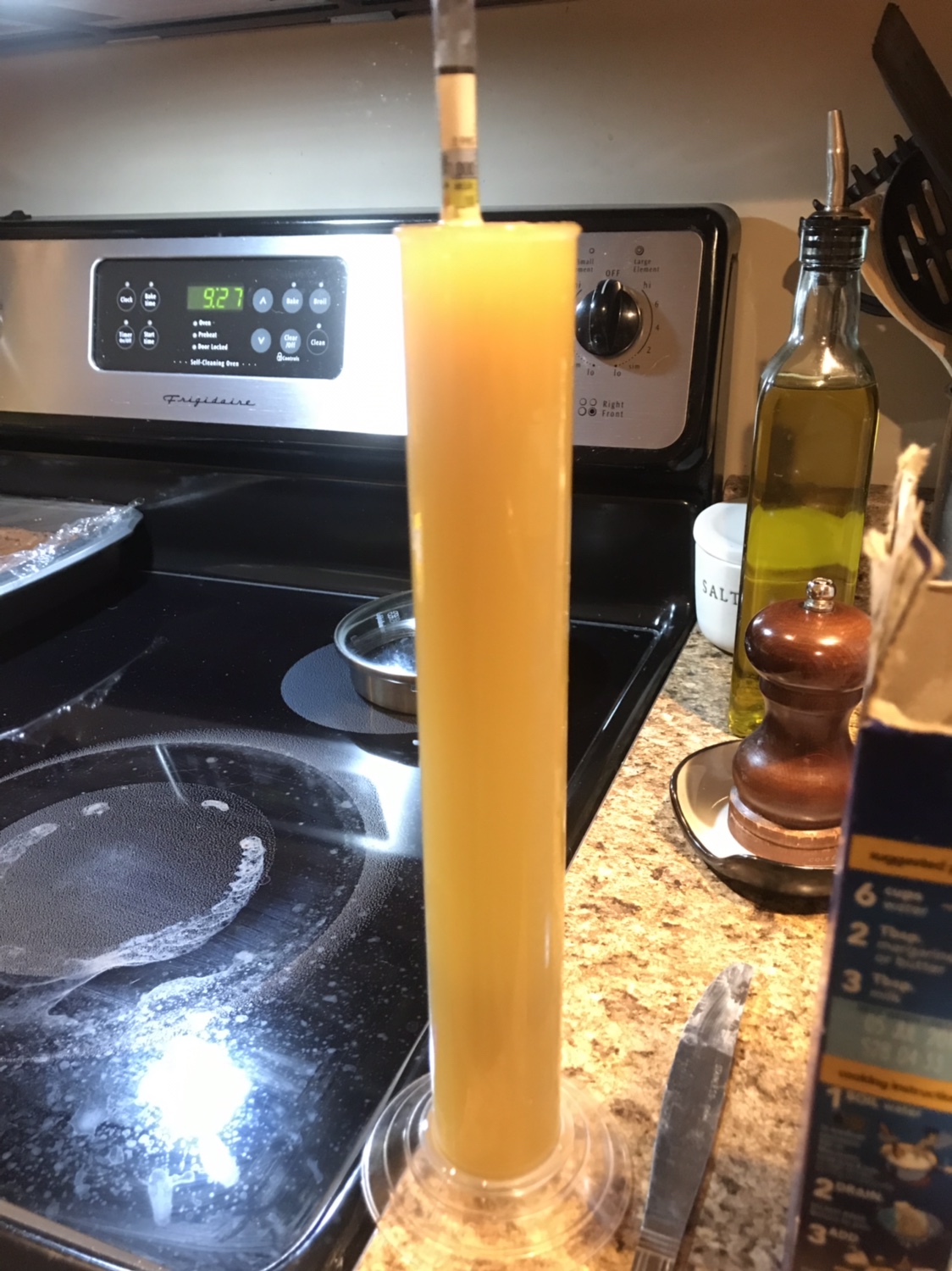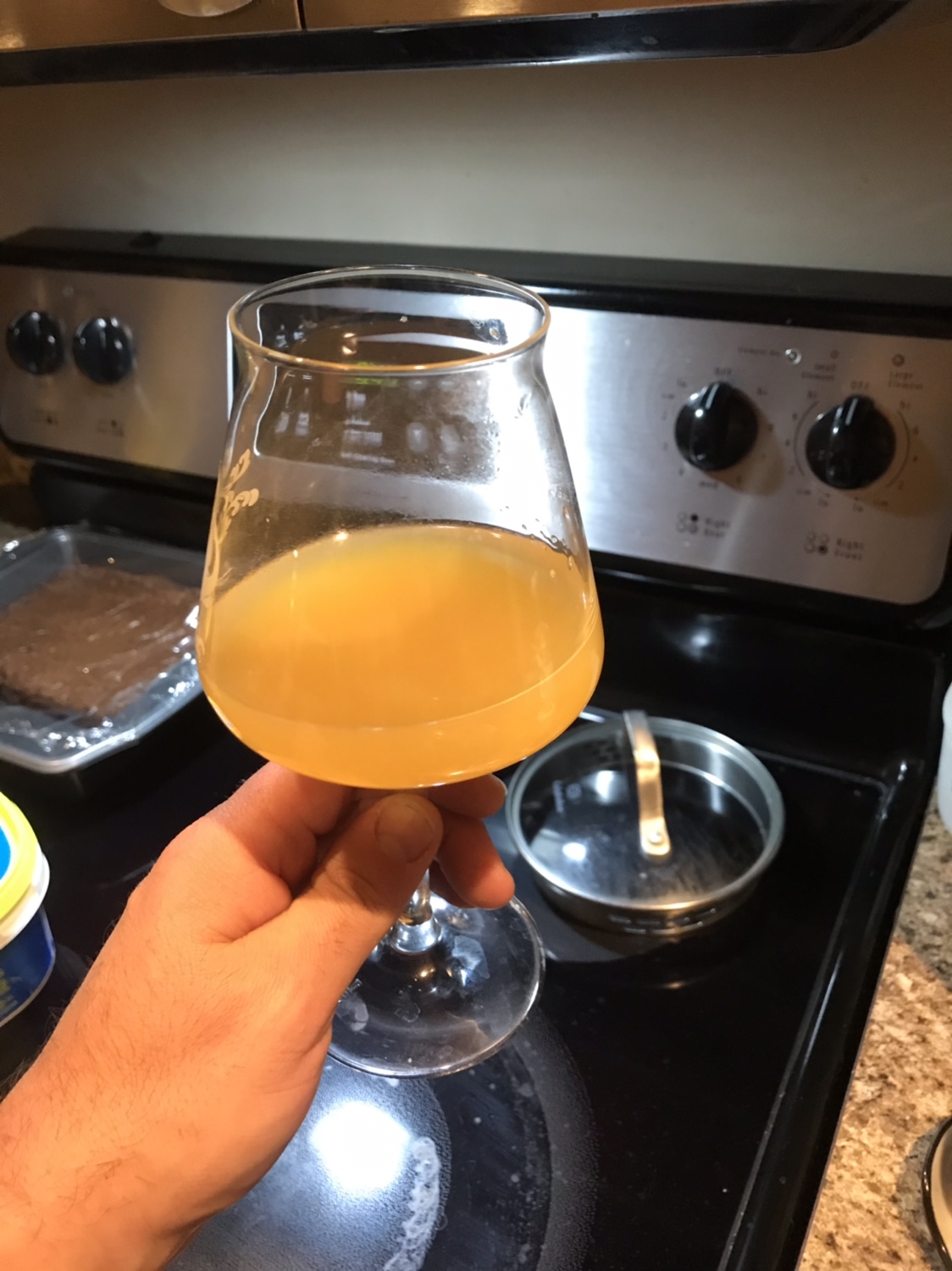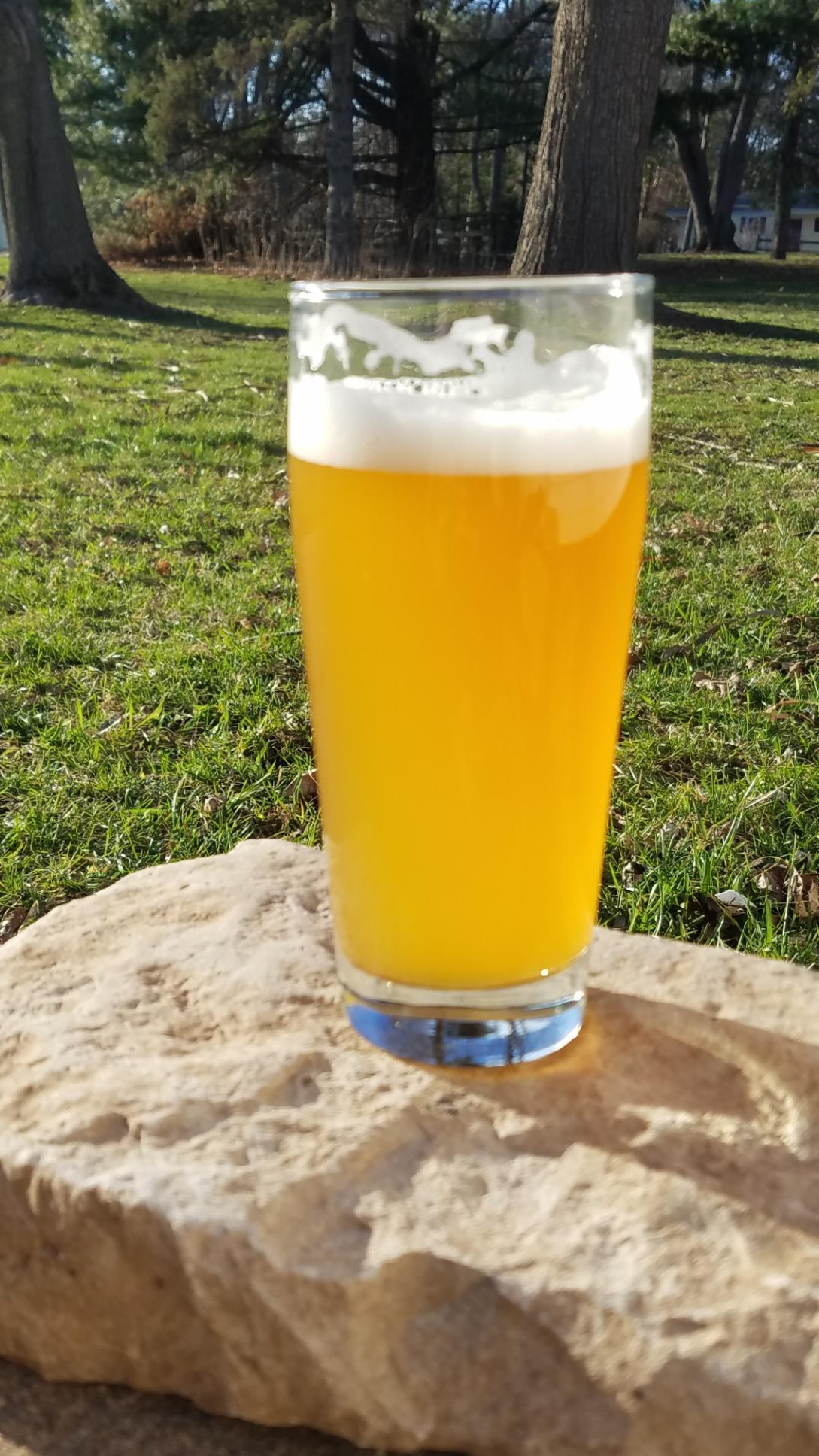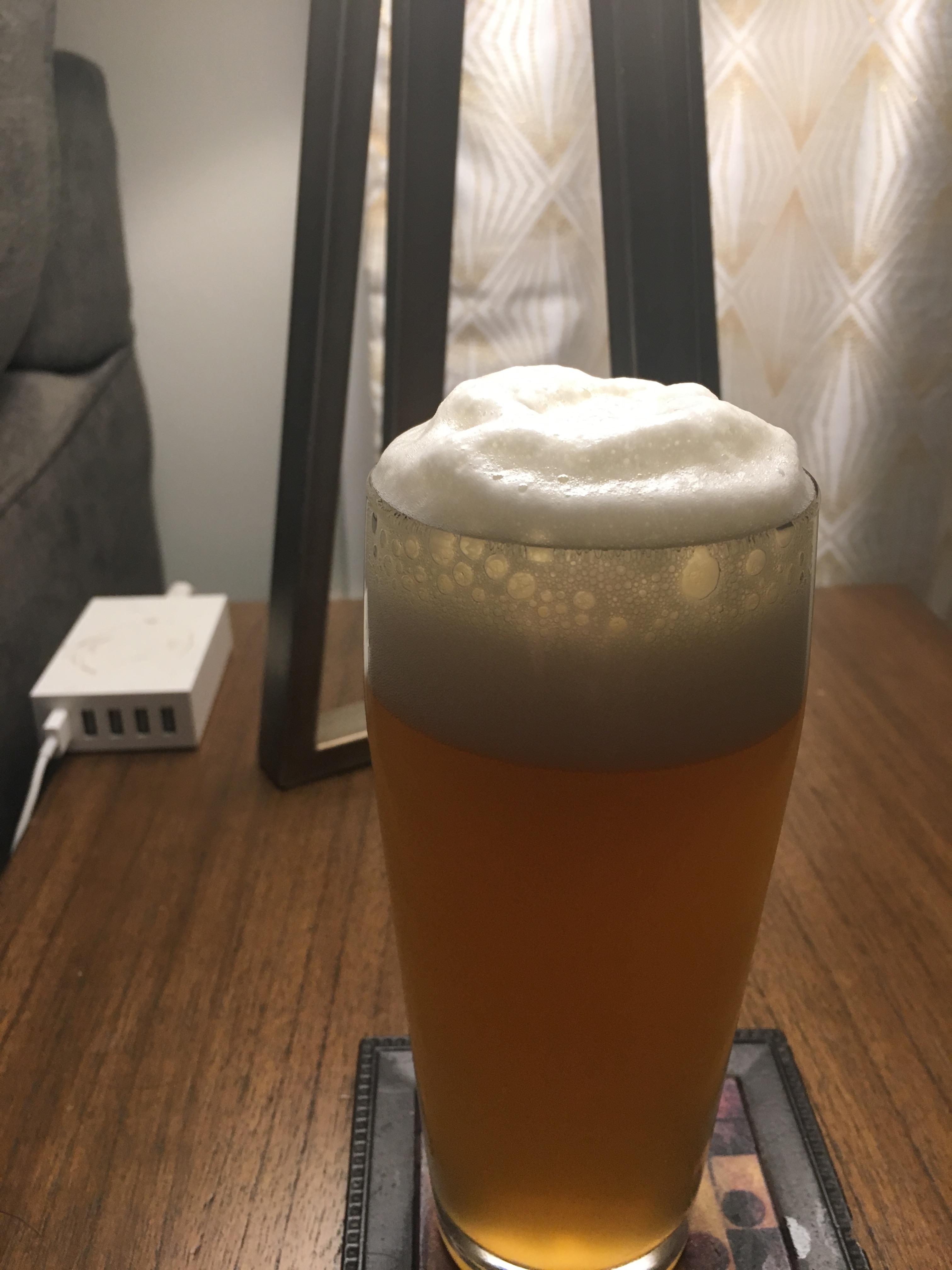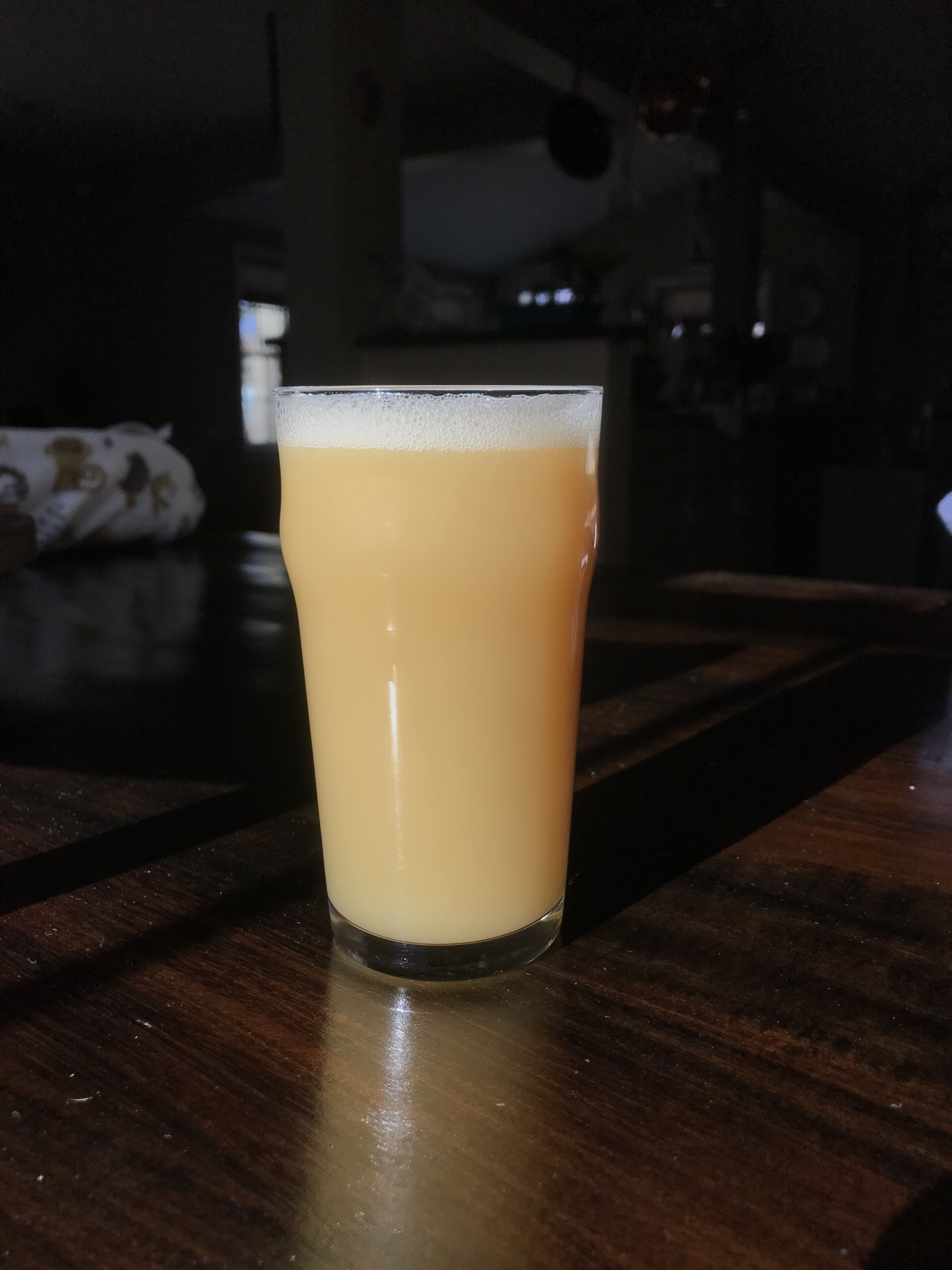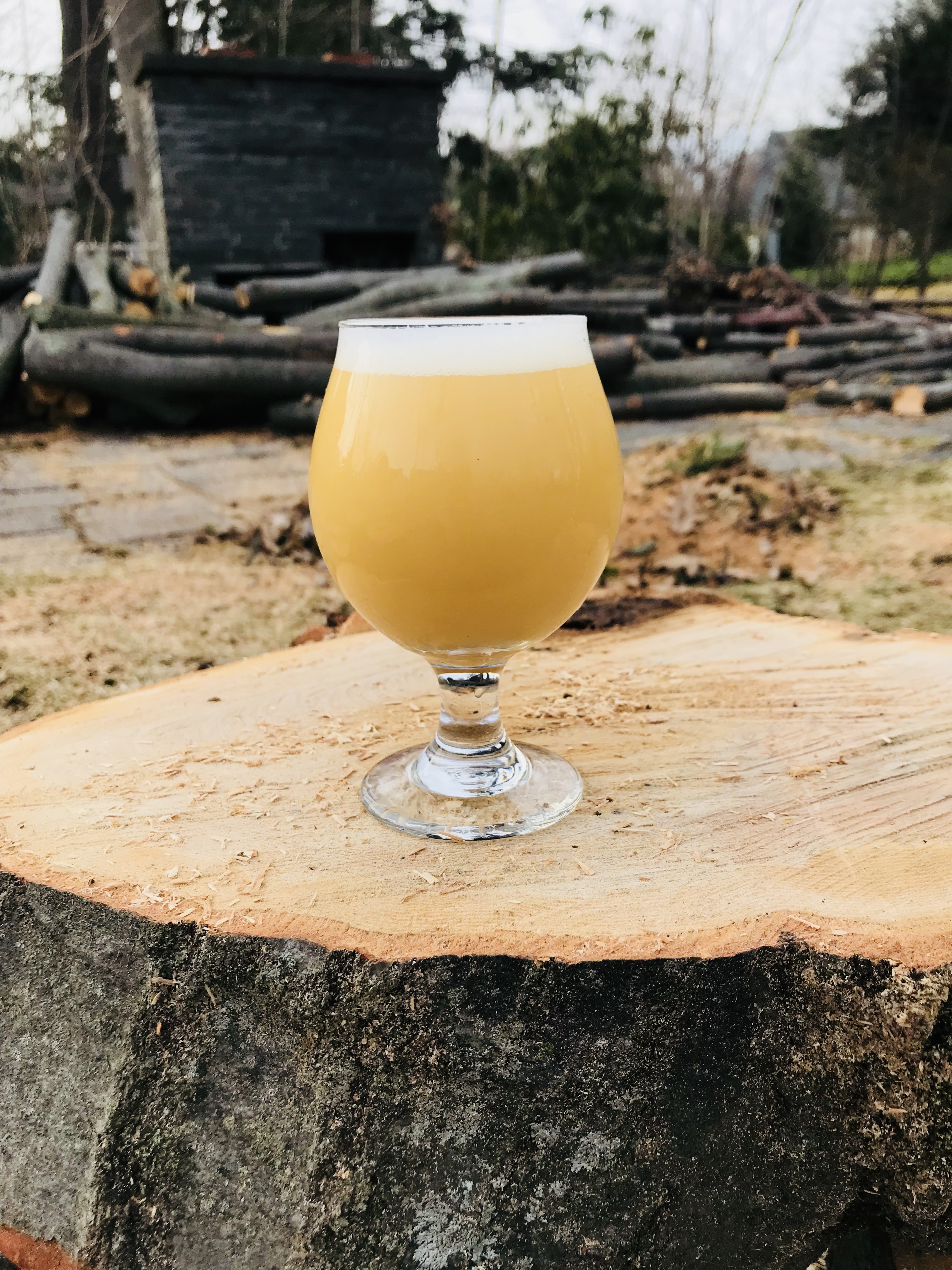Straight meringue bruh. Terrible picture but it gives you the idea. I have head all the way to the bottom. In all honesty, a lot of it is in the pour. Youtube slow pour.
I'm a huge fan of simple. I'm also a huge fan of hazy vs milky. So I tend to leave the flaked stuff out. Sometimes I'll throw 5% wheat malt in there for head retention (I haven't in a while because I'm getting better at the head stuff without it). Mouthfeel is probably my best. But this is also the highest ABV I've ever made which will help in that department.
Recipe:
90% Rahr 2 row
10% Weyermann Vienna
Columbus @ 60 min - 40 IBU
Amarillo @ 20 min - ~20 IBU
Centennial @ 20 min - ~25 IBU
WP 1 oz each Amarillo, Centennial & Mosaic (all cryo) @ 175F for 30 min.
DH 1 oz each Amarillo, Centennial & Mosaic (all cryo) after FG is reached and yeast is dumped.
2 packets 1318 with a vitality starter on brew day with runnings from sparge. Fermented with schedule from previous posts.


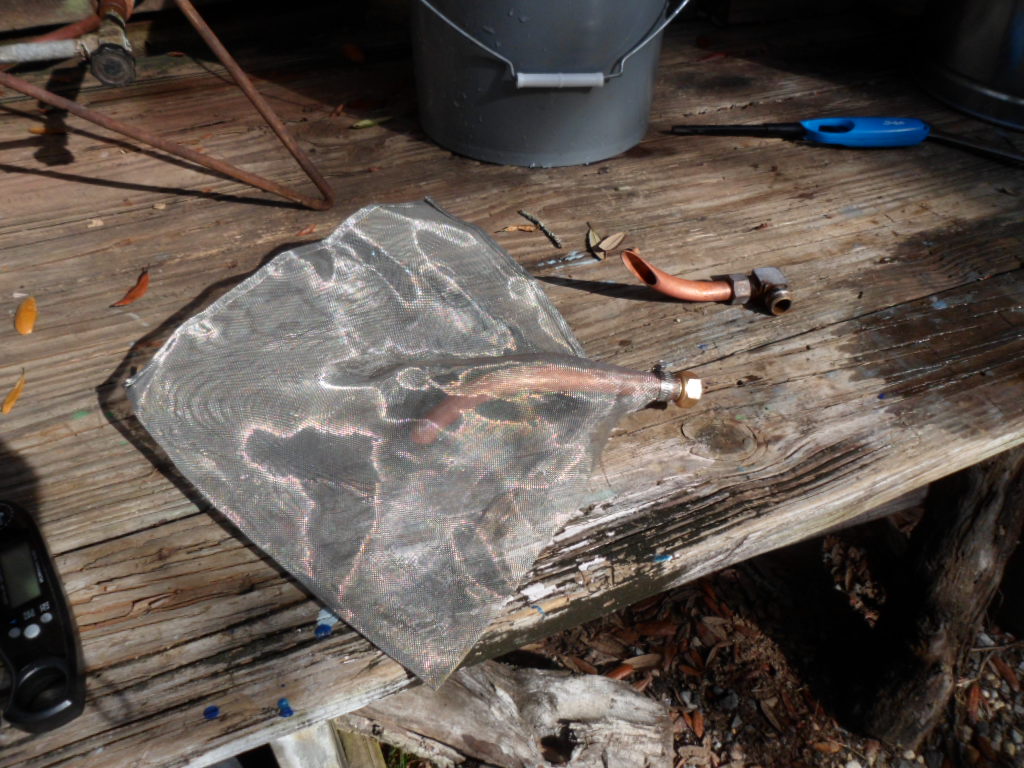
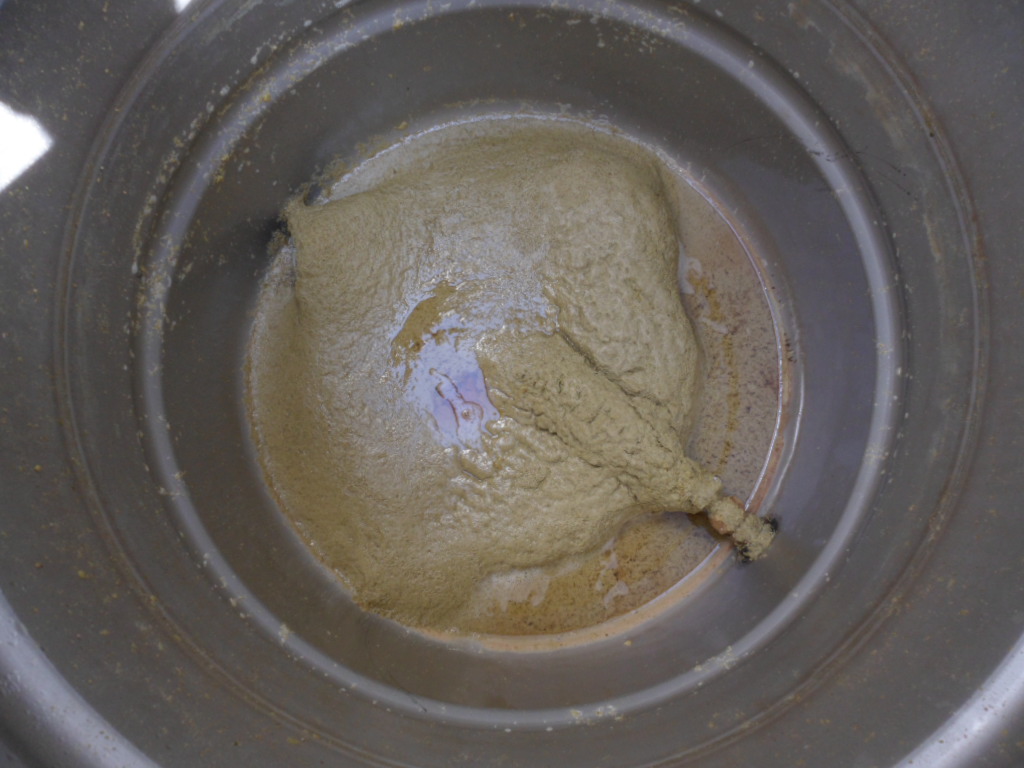
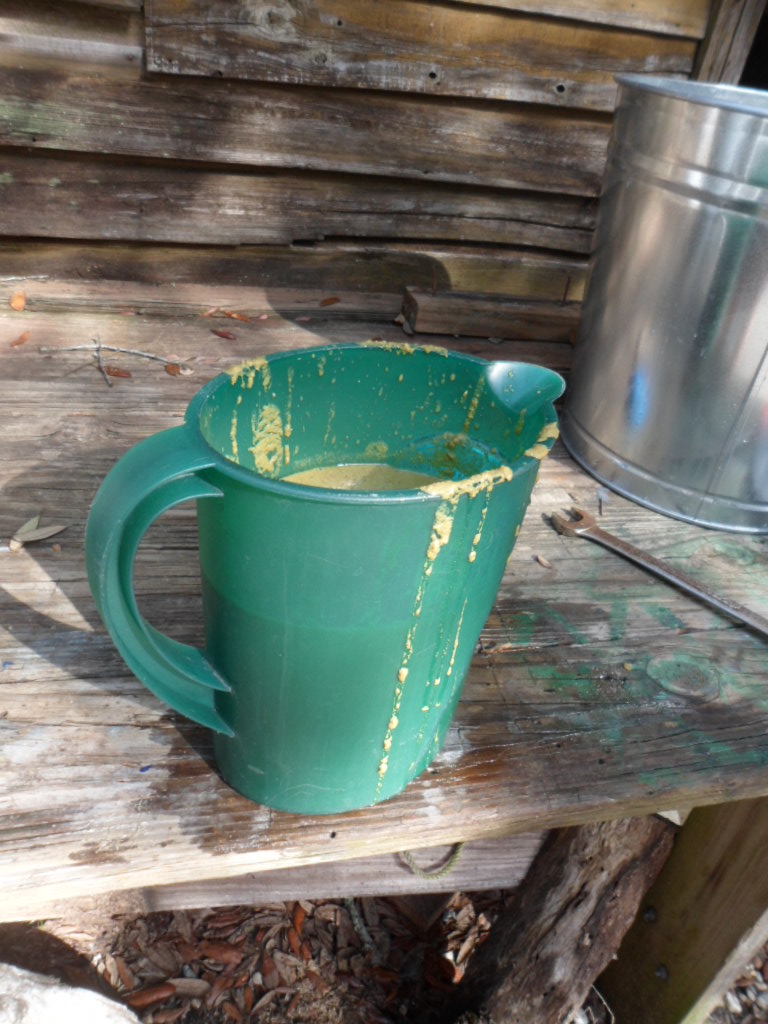















































![Craft A Brew - Safale BE-256 Yeast - Fermentis - Belgian Ale Dry Yeast - For Belgian & Strong Ales - Ingredients for Home Brewing - Beer Making Supplies - [3 Pack]](https://m.media-amazon.com/images/I/51bcKEwQmWL._SL500_.jpg)








